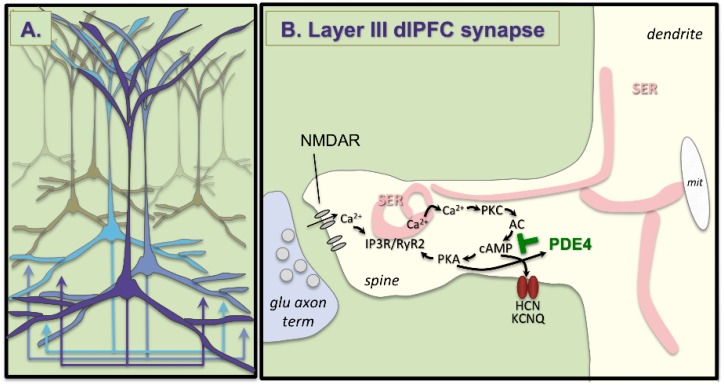Figure 2.
Recurrent excitation in deep layer III of the dlPFC. (A) Schematic drawing of clusters of pyramidal cells in deep layer III of dlPFC with shared characteristics that excite each other through extensive recurrent excitatory glutamatergic connections to keep information “in mind” in the absence of sensory stimulation. (B) A glutamate synapse on a pyramidal cell spine in deep layer III of dlPFC. These synapses depend on NMDAR stimulation, and have extensive elaboration of the calcium-containing smooth endoplasmic reticulum (SER) “spine apparatus” in the spine, where there is evidence of feedforward calcium-cAMP signaling, which can open HCN and KCNQ channels to reduce firing. This process is held in check by the phosphodiesterases (PDE4), which catabolize cAMP and are anchored to the spine apparatus by DISC1 [56].

